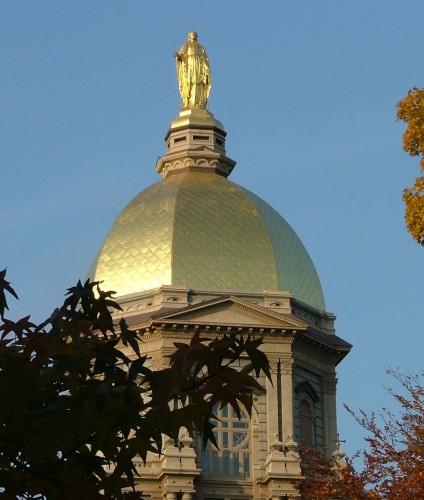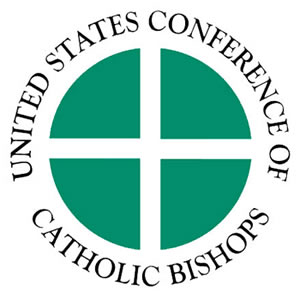Missing the key fact -- again (updated)
 When diplomats want to make a specific point or argument, they tend to speak in very precise language in an attempt to prevent misunderstandings. This is especially true when their statements address issues linked to major world powers or leaders -- such as the president of the United States. Thus, it isn't very surprising that Harvard professor Mary Ann Glendon, the former U.S. ambassador to the Vatican, made it very clear why she decided not to accept the 2009 Laetare Medal from the University of Notre Dame, which would have been granted in the same ceremony in which President Barack Obama received his honorary doctor of laws degree from America's most prestigious Catholic institution. The letter she posted online stated:
When diplomats want to make a specific point or argument, they tend to speak in very precise language in an attempt to prevent misunderstandings. This is especially true when their statements address issues linked to major world powers or leaders -- such as the president of the United States. Thus, it isn't very surprising that Harvard professor Mary Ann Glendon, the former U.S. ambassador to the Vatican, made it very clear why she decided not to accept the 2009 Laetare Medal from the University of Notre Dame, which would have been granted in the same ceremony in which President Barack Obama received his honorary doctor of laws degree from America's most prestigious Catholic institution. The letter she posted online stated:
... (As) a longtime consultant to the U.S. Conference of Catholic Bishops, I could not help but be dismayed by the news that Notre Dame also planned to award the president an honorary degree. This, as you must know, was in disregard of the U.S. bishops' express request of 2004 that Catholic institutions "should not honor those who act in defiance of our fundamental moral principles" and that such persons "should not be given awards, honors or platforms which would suggest support for their actions." That request, which in no way seeks to control or interfere with an institution's freedom to invite and engage in serious debate with whomever it wishes, seems to me so reasonable that I am at a loss to understand why a Catholic university should disrespect it.
However, in a Los Angeles Times report on this event, here is the context in which Glendon's action was explained to readers:
Notre Dame's president, the Rev. John Jenkins, praised Obama for accepting the school's invitation, despite knowledge that his views differed from many of those taught by the Roman Catholic Church.
"Others might have avoided this venue for that reason," Jenkins said. "But President Obama is not someone who stops talking with those who differ with him."
Obviously, one of the narrow-minded leaders who declined this chance for symbolic dialogue was Father Jenkins' own shepherd, Bishop John D'Arcy of the Diocese of Ft. Wayne-South Bend.
Bishop D'Arcy boycotted the ceremony and suggested the university had "chosen prestige over truth." Also missing from the ceremony were Mary Ann Glendon, a former U.S. ambassador to the Vatican, who turned down a prestigious Notre Dame medal because she did not agree with the university's decision to honor Obama.
My question is simple: Is that final sentence accurate?
Did Glendon refuse the Laetare Medal because "she did not agree with the university's decision to honor Obama," or did she refuse it because she opposed the university's decision to violate the 2004 policy statement by the U.S. Catholic bishops?
What's the difference, you say? Glendon would insist that the difference is crucial. At best, this statement of her motive is incomplete. It makes it sound like she was acting alone, based on her own private opinion. It removes the U.S. Catholic Bishops Conference (hardly a right-wing organization) from the picture altogether. This, in a Catholic dispute, tosses away a crucial piece of the puzzle.
Which is precisely what happened in the mainstream coverage of this event, at least the coverage that I have seen so far. Has anyone seen a major, mainstream media report that quotes the 2004 policy statement by the U.S. bishops?
But I shouldn't be too hard on the Los Angeles Times. At least its early coverage included content from the larger, official protests at Notre Dame, as opposed to an exclusive focus on the loud, often rude, in-your-face demonstrations by outsiders.
Bishop John D'Arcy of the Diocese of Ft. Wayne-South Bend, whose jurisdiction includes Notre Dame, spoke at an opposition rally held before Obama's arrival.
"John D'Arcy is not important. The office of bishop is very important," he said. "It must always be like Pope John Paul II, to [stand] for life everywhere with no exception."
D'Arcy said he had not intended to be on campus Sunday, but wanted to support the student opposition. "The heroes are the young people on campus and the students in the great tradition of John Paul and Pope Benedict," he said. "Their protest was carried out with love, prayer, dignity and respect."
Dozens knelt in prayer and lighted candles at the Grotto, a popular place for reflection on campus.
 It even mentioned another quieter, reflective event for those opposed to the granting of this honor to Obama, whose rejection of all limitations on abortion has, so far, been absolute.
It even mentioned another quieter, reflective event for those opposed to the granting of this honor to Obama, whose rejection of all limitations on abortion has, so far, been absolute.
At a Mass on the university's South Quad, the Rev. Kevin Rousseau, a Holy Cross priest on the university faculty, praised the students' spiritual response to the "debate, confusion and mixed emotions" since the invitation to Obama was announced.
"There is an instinct cultivated here at Notre Dame," he said. "Our student body instinctively came to the Lord ... with rosaries, masses and prayer services as responses to the culture of death." He added, "We have gathered today to give voice to the vulnerable in society."
If you compare and contrast numbers quoted in the mainstream stories today, it appears that there were about 100 screaming outsiders on or near the campus, the people who ended up getting arrested and, thus, drawing most of the coverage. Meanwhile, it seems that "several hundred" people attended the prayer services and mainstream rallies.
It would be nice to know more about those events, which represented the actual pro-life community at Notre Dame. I guess those people didn't make enough noise, saying their prayers and all that. They didn't fit the template for the day, since they lacked key symbols -- such as "baby carriages with dolls covered in fake blood."
It is clear that the vast majority of students present supported the president in this showdown of symbolic gestures. These students were backed -- it appears -- by most members of the Notre Dame community at large. Then again, this should not be a big surprise.
After all, as shown in a Washington Post report, larger numbers of people turned out to protest Republican presidents when they appeared on campus to speak.
Obama is not the first president to be met by protesters at Notre Dame's commencement. About 400 gathered to oppose Ronald Reagan's stand on capital punishment and Central American policy in 1981 and hundreds expressed their anger about George W. Bush's support for the death penalty two decades later.
In 1992, Bishop John D'Arcy boycotted the commencement speech by George H. W. Bush because the university awarded a top medal to Democratic Sen. Daniel Patrick Moynihan, an ardent supporter of abortion rights.
Might that "top medal" given to Moynihan be the Laetare Medal that Glendon declined? Yes, it was.
You see, Obama had home-court advantage when he came to offer praises for Notre Dame and its heritage of progressive Catholicism (full speech transcript here). That's the point. That's the heart of the story and the heart of the conflict between Notre Dame's leadership and the mainstream pro-life movement on the campus and across the nation.
UPDATE: Just talked to a Notre Dame faculty member who estimated that about 1,000 people attended the prayer service at the grotto and another 2,000 the public Mass held as a counter-point rite to the commencement events.
From a journalistic perspective, the lack of coverage of those events -- contrasted with the omnipresent coverage of the much smaller Randall Terry-Alan Keyes events for outsiders, with all of the blunt language and visuals -- appears to be the MSM content issue of the day.
UPDATE II: Lots of opinion, but lots of factual observations in this post by Catholic blogger Erin Manning about the mainstream rallies at Notre Dame. Note especially the reference to 50 faculty members at the counter rally.
This raises a question: Were there three pro-life events linked to the NDResponse.com efforts? A rally, a prayer service at the Grotto and the actual Mass? Or was the Grotto prayer event the same thing as the "rally"?